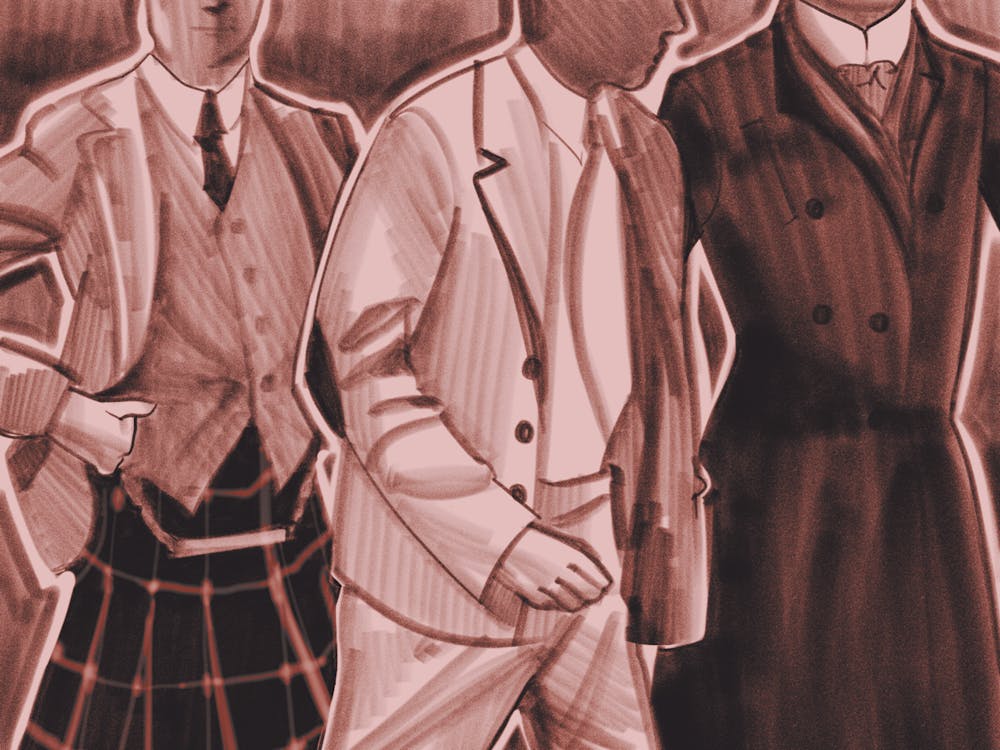If one had to summarize all of menswear—its ups and downs, bell bottoms, shin huggers, and oxford bags—into an essential fabric, it would have to be tweed. Hailing from the frosty and unforgiving weather of Northern Europe, tweed has become and remains the most versatile, nostalgic fabric one can wear from September to April. But some of you might be asking: “Sean, what is tweed? How do I wear it? Why are your outfits so amazing?” Well, dear reader, today I’ll be taking you on a brief tour through the rugged land of tweed.
It would be prudent to start off with a brief explanation of what tweed is, where it came from, and how it established itself as the dominant fabric within men’s fashion. Broadly speaking, tweeds are heavy, hard-wearing woolen fabrics that are often fuzzier and more textured in appearance than a regular worsted wool or the smooth finely woven suit fabrics one might find at the mall. Tweeds got their start in the wintery climates of Scotland and Ireland, where their aforementioned qualities made them well suited—pun intended—to both the weather and labor of the workers. Eventually the posh Englishmen of the south began buying leisurely estates in Scotland and took a liking to the fabric. The London-centered machine of men’s fashion picked up on tweed and ran wild with it, with encouragement from the massively influential royal dandies Edward VI and Edward VII. As fashion moved towards more relaxed silhouettes and attitudes in the twenties and thirties, many found tweed to be the perfect fabric to exude the casual and sporty nature of the interwar period. A cursory glance at the first few editions of Esquire will show tweed suits and sport jackets galore. And while tweed suits may be hard to come by nowadays, a tweed sports jacket with odd trousers has remained a menswear staple and—in an increasingly casual world—the go-to uniform of those in need of a fancy getup on the fly.
The most brilliant thing about tweed is its variety. There are many different types of tweed, varying in wave, pattern, and region—each giving your outfit a different look and meaning. You can embrace the sweater-like sponginess of an old, rough, Harris tweed, or the expression of the colorful and vibrant flecks of a Donegal. You could go for an old school look, with a suit of hard-wearing and cheviot, or, for the complete opposite, a soft and casual Shetland. Even if you’re stumped and frozen with indecision facing a bloated closet, tweed will always have your back. Just throw on a patterned tweed jacket, some gray flannels, and a vintage button down and you’re off to the races.
Moving beyond the varieties of the loom, tweed is great for its universality and versatility, allowing a wearer to travel to many different eras. You can go for a more modern look with a softly cut Neapolitan jacket in a subtle check or windowpane pattern. Or you could go back to the sixties and take full advantage of the Ivy League look on an Ivy League campus and wear a Glenn check sack jacket with a pair of khakis and loafers. If you want to go even further back to the heyday of upper crust clothing you could turn to the thirties and wear a soft tweed suit made from Shetland, Harris, or Cheviot. You could even go for the Hollywood look of the era: big broad shoulders, nipped waists, and dropped belt loops made from heavy tweed fabric in a loud and explosive pattern.
Tweed speaks to me on a personal level, not just as a throwback to the vintage styles that inspire me, but also as a reminder of the old standards for fabric. Now, the quality of fabric is getting worse and worse, yet the fashion industry tries to sell it as an improvement, equating softness and lightness with luxury. These new, flimsy, synthetic, and blended fabrics fall apart after a few wears and lack the life of a high quality loom that keeps bringing you back to it. In the menswear industry, this manifests in an arms race toward lighter fabrics, like extremely finely woven Super 100s wool. While these fabrics certainly have their place and can be high-quality, to me, there is nothing like wearing a heavy tweed coat, the weight of the fabric draping down beautifully. Maybe I’m just an old fogey or horribly out of touch. Still, I hope this rundown of my favorite fabric—nostalgic, wonderful tweed—will inspire you to wear it, and to think about how you view luxury in clothes.





